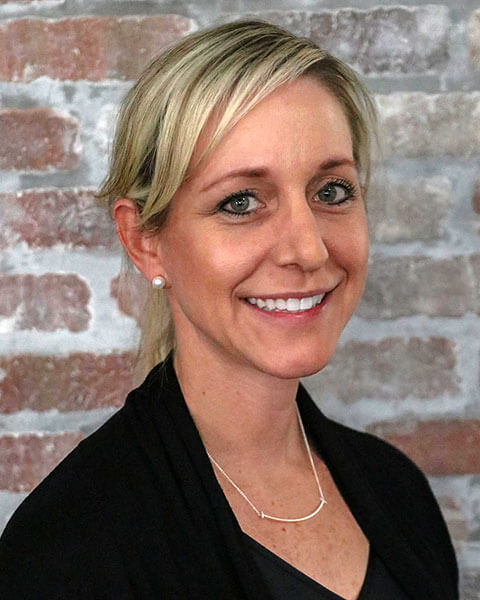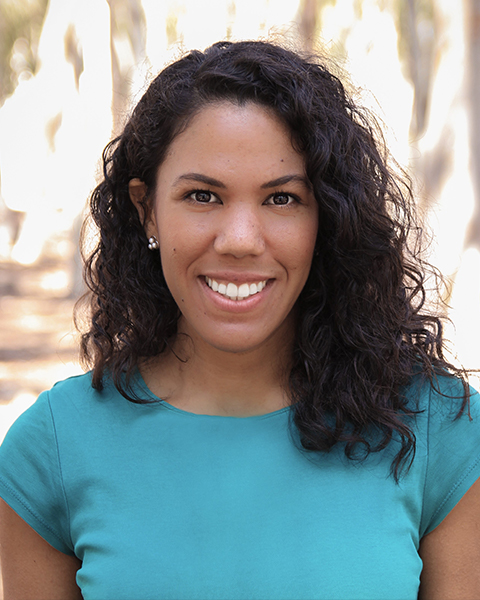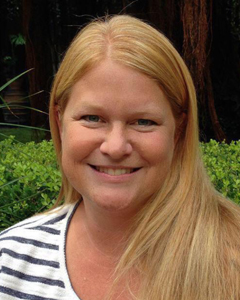Speech Therapy
We are SD Regional Center vendors and offer FREE speech therapy, occupational therapy, and physical therapy services for those children that qualify! Our physical therapy team is also in-network with nearly all insurance companies!
Our Specialties
 We specialize in child-centered intervention for autism and Asperger’s Syndrome, remediation of speech articulation and phonological disorders, treatment for apraxia of speech, early intervention for children with delayed language development (later-talkers), treating stuttering disorders, teaching visualization strategies to increase listening and reading comprehension, eliminating thumb sucking, pacifier use, tongue thrust, and implementation of behavior modification techniques and other visual strategies to support your child’s success. We value speech, language, and social/pragmatic therapy not only in a one-on-one setting with a Speech-Language Pathologist, but also in group setting with peers. Our social groups provide pragmatic language/social therapy in a naturalistic and fun setting, and we have been known to use social role model peers for some of the social programs we run. We also value collaboration with other specialists in our center and also you child’s school staff.
We specialize in child-centered intervention for autism and Asperger’s Syndrome, remediation of speech articulation and phonological disorders, treatment for apraxia of speech, early intervention for children with delayed language development (later-talkers), treating stuttering disorders, teaching visualization strategies to increase listening and reading comprehension, eliminating thumb sucking, pacifier use, tongue thrust, and implementation of behavior modification techniques and other visual strategies to support your child’s success. We value speech, language, and social/pragmatic therapy not only in a one-on-one setting with a Speech-Language Pathologist, but also in group setting with peers. Our social groups provide pragmatic language/social therapy in a naturalistic and fun setting, and we have been known to use social role model peers for some of the social programs we run. We also value collaboration with other specialists in our center and also you child’s school staff.
Speech Articulation Difficulties
Phonological Impairments
Apraxia and Motor Speech Challenges
For a younger child, some signs of motor planning challenges include: Does not coo or babble as an infant; First words are late, and they may be missing sounds; only a few different consonant and vowel sounds; Problems combining sounds; may show long pauses between sounds; Simplifies words by replacing difficult sounds with easier ones or by deleting difficult sounds (although all children do this, the child with apraxia of speech does so more often); May have problems eating.
For an older child some signs of motor planning challenges include: Makes inconsistent sound errors that are not the result of immaturity; Can understand language much better than he or she can talk; Has difficulty imitating speech, but imitated speech is more clear than spontaneous speech; May appear to be groping when attempting to produce sounds or to coordinate the lips, tongue, and jaw for purposeful movement; Has more difficulty saying longer words or phrases clearly than shorter ones; Appears to have more difficulty when he or she is anxious; Is hard to understand, especially for an unfamiliar listener; Sounds choppy, monotonous, or stresses the wrong syllable or word.
Some problems associated with motor planning challenges include: Weakness of the lips, jaw, and/or tongue; Delayed language development; Other expressive language problems like word order confusions and word recall; Difficulties with fine motor movement/ coordination; Over sensitive (hypersensitive) or under sensitive (hyposensitive) in their mouths (e.g., may not like tooth brushing or crunchy foods, may not be able to identify an object in their mouth through touch); Problems when learning to read, spell, and write.
Research shows the children with true apraxia of speech have more success when they receive frequent (3-5 times per week) and intensive treatment. Children seen alone for treatment tend to do better than children seen in groups. As the child improves, they may need treatment less often, and group therapy may be a better alternative. One of the most important things for the family to remember is that treatment of apraxia of speech takes time and commitment. Children with apraxia of speech need a supportive environment that helps them feel successful with communication.
San Diego Center For Speech Therapy has Speech-Language Pathologists specifically trained in PROMPT to treat apraxia and motor-speech challenges.
Expressive & Receptive Language Delays
A Receptive Language Disorder is a type of learning disability affecting the ability to understand spoken, and sometimes written, language. Students with receptive language disorders often have difficulty with speech and organizing their thoughts, which creates problems in communicating verbally with others and in organizing their thoughts on paper. People with receptive language disorder may have difficulty understanding spoken language, responding appropriately, or both. Problems may including difficulty following directions, remembering the sequence of information, understanding stories and general listening skills.
Auditory Processing Disorders
For example, the request “Tell me how a chair and a couch are alike” may sound to a child with APD like “Tell me how a couch and a chair are alike.” It can even be understood by the child as “Tell me how a cow and a hair are alike.” These kinds of problems are more likely to occur when a person with APD is in a noisy environment or when he or she is listening to complex information. Children with auditory processing difficulty typically have normal hearing and intelligence. However, they have also been observed to: Have trouble paying attention to and remembering information presented orally; Have problems carrying out multistep directions; Have poor listening skills; Need more time to process information; Have low academic performance; Have behavior problems; Have language difficulty (e.g., they confuse syllable sequences and have problems developing vocabulary and understanding language); Have difficulty with reading, comprehension, spelling, and vocabulary.
To determine whether your child has a hearing function problem, an audiologic evaluation is necessary. An audiologist will give tests that can determine the softest sounds and words a person can hear and other tests to see how well people can recognize sounds in words and sentences. For example, for one task, the audiologist might have your child listen to different numbers or words in the right and the left ear at the same time. Another common audiologic task involves giving the child two sentences, one louder than the other, at the same time. The audiologist is trying to identify the processing problem. A speech-language pathologist can find out how well a person understands and uses language. A mental health professional can give you information about cognitive and behavioral challenges that may contribute to problems in some cases, or he or she may have suggestions that will be helpful. Because the audiologist can help with the functional problems of hearing and processing, and the speech-language pathologist is focused on language, they may work as a team with your child. All of these professionals seek to provide the best outcome for each child.
Dyslexia
The child who has dyslexia as part of a larger language learning disability has trouble with both the spoken and the written word. These problems may include difficulty with the following: Expressing ideas clearly, as if the words needed are on the tip of the tongue but won’t come out. What the child says can be vague and difficult to understand (e.g., using unspecific vocabulary, such as “thing” or “stuff” to replace words that cannot be remembered). Filler words like “um” may be used to take up time while the child tries to remember a word; Learning new vocabulary that the child hears (e.g., taught in lectures/lessons) and/or sees (e.g., in books); Understanding questions and following directions that are heard and/or read; Recalling numbers in sequence (e.g., telephone numbers and addresses); Understanding and retaining the details of a story’s plot or a classroom lecture; Reading and comprehending material; Learning words to songs and rhymes; Telling left from right, making it hard to read and write since both skills require this directionality; Letters and numbers; Learning the alphabet; Identifying the sounds that correspond to letters, making learning to read difficult; Mixing up the order of letters in words while writing; Mixing up the order of numbers that are a part of math calculations; Spelling; Memorizing the times tables; and Telling time.
The goals of speech and language treatment for the child with a reading problem target the specific aspects of reading and writing that the student is missing. For example, if the student is able to read words but is unable to understand the details of what has been read, comprehension is addressed. If a younger student has difficulty distinguishing the different sounds that make up words, treatment will focus on activities that support growth in this skill area (rhyming, tapping out syllables, etc.). At San Diego Center For Speech therapy, we have therapists trained in Lindamood Bell LIPS® and Visualizing and Verbalizing Programs® to address reading and comprehension challenges.
Fluency Disorders and Stuttering
Speech may become completely stopped or blocked. Blocked is when the mouth is positioned to say a sound, sometimes for several seconds, with little or no sound forthcoming. After some effort, the person may complete the word. Interjections such as “um” or “like” can occur, as well, particularly when they contain repeated (“u- um- um”) or prolonged (“uuuum”) speech sounds or when they are used intentionally to delay the initiation of a word the speaker expects to “get stuck on. Some examples of stuttering include: “W- W- W- Where are you going?” (Part-word repetition: The person is having difficulty moving from the “w” in “where” to the remaining sounds in the word. On the fourth attempt, he successfully completes the word.; “SSSSave me a seat.” (Sound prolongation: The person is having difficulty moving from the “s” in “save” to the remaining sounds in the word. He continues to say the “s” sound until he is able to complete the word.); “I’ll meet you – um um you know like – around six o’clock.” (A series of interjections: The person expects to have difficulty smoothly joining the word “you” with the word “around.” In response to the anticipated difficulty, he produces several interjections until he is able to say the word “around” smoothly.) In childhood, there are risk factors to predict whether stuttering may continue on its own.
Factors that are noted by many specialists include the following: a family history of stuttering; stuttering that has continued for 6 months or longer; presence of other speech or language disorder; strong fears or concerns about stuttering on the part of the child or the family. No single factor can be used to predict whether a child will continue to stutter. The combination of these factors can help SLPs determine whether treatment is indicated. For older children and adults, the question of whether stuttering is likely to continue is somewhat less important, because the stuttering has continued at least long enough for it to become a problem in the person’s daily life. For these individuals, an evaluation consists of tests, observations, and interviews that are designed to assess the overall severity of the disorder. In addition, the impact the disorder has on the person’s ability to communicate and participate appropriately in daily activities is evaluated. Information from the evaluation is then used to develop a specific treatment program, one that is designed to: help the individual speak more fluently, communicate more effectively, and participate more fully in life activities.
Therapy for stuttering may include the following: They are designed to teach the person specific skills or behaviors that lead to improved oral communication. For instance, many SLPs teach people who stutter to control and/or monitor the rate at which they speak. In addition, people may learn to start saying words in a slightly slower and less physically tense manner. They may also learn to control or monitor their breathing. When learning to control speech rate, people often begin by practicing smooth, fluent speech at rates that are much slower than typical speech, using short phrases and sentences. Over time, people learn to produce smooth speech at faster rates, in longer sentences, and in more challenging situations until speech sounds both fluent and natural. “Follow-up” or “maintenance” sessions are often necessary after completion of formal intervention to prevent relapse.
Autism / Pragmatics / Social Language
Children with autism and Asperger’s Syndrome typically have impairments in the area of social/pragmatics. Pragmatics involve three major communication skills: Using language for different purposes, such as: greeting (e.g., hello, goodbye); informing (e.g., I’m going to get a cookie); demanding (e.g., Give me a cookie); promising (e.g., I’m going to get you a cookie); requesting (e.g., I would like a cookie, please). Changing language according to the needs of a listener or situation, such as: talking differently to a baby than to an adult; giving background information to an unfamiliar listener; speaking differently in a classroom than on a playground. Following rules for conversations and storytelling, such as: taking turns in conversation; introducing topics of conversation; staying on topic; rephrasing when misunderstood; how to use verbal and nonverbal signals; how close to stand to someone when speaking; how to use facial expressions and eye contact.
An individual with pragmatic problems may: say inappropriate or unrelated things during conversations; tell stories in a disorganized way; have little variety in language use; prefer to interact with adults versus peers; become relatively isolated around peers; not attend to other’s body language or facial cues; not realize when others might not be interested in their conversational topics. Pragmatic problems can lower social acceptance. Peers may avoid interacting with an individual with a social/pragmatic disorder.
San Diego Center For Speech Therapy has excellent social groups such as Social Stars Program to address the area of social/pragmatic language skills.
Voice Disorders & Selective Mutism
The way one’s voice sounds to others. A healthy voice is clear, strong, and age/gender appropriate. Some concerns may be a hoarse voice, nasal voce, lack of nasality (sounding like the person has a cold), or an overly loud voice. It is important to determine the cause of the voice disorder, as often times voice differences can be due to reflux, structure abnormalilties such as enlarged tonsils or adenoids, or poor habits/misuse of the voice.
Selective Mutism
Selective mutism is a disorder that usually occurs during childhood. It is when the child does not to speak in at least one social setting. However, the child can speak in other situations. Selective mutism typically occurs before a child is 5 years old and is usually first noticed when the child starts school. Symptoms of selective mutism are as follows: consistent failure to speak in specific social situations (in which there is an expectation for speaking, such as at school) despite speaking in other situations; not speaking interferes with school or work, or with social communication; lasts at least 1 month (not limited to the first month of school); failure to speak is not due to a lack of knowledge of, or comfort, with the spoken language required in the social situation; not due to a communication disorder (e.g., stuttering). Children with selective mutism may also show: anxiety disorder (e.g., social phobia); excessive shyness; fear of social embarrassment; and social isolation and withdrawal.
Feeding Issues
Tongue Thrust / Orofacial Myofunctional Disorders
We work with many orthodontists resolving the myofunctional issues of patients in order to help the teeth and mouth achieve a desired position pre, during, and post orthodontics. Myofunctional therapy can also help prevent orthodontic relapse once orthodontic appliances are removed
Our Techniques and Trainings
We have therapists that have training in the following methods:
- PROMPT for Apraxia and Motor Speech Challenges
- Kaufman Treatment For Apraxia
- DIR/Floortime for Autism
- Relationship Development Intervention for Autism (RDI)
- Michelle Garcia Winner’s Social Thinking Program
- SCERTS Model For Autism
- Treatment and Education of Autistic and Related Communication Handicapped Children Method (TEACCH)
- Autism Diagnostic Observation Schedule (ADOS)
- Techniques for Asperger’s Syndrome by Tony Atwood
- Hanen Training
- Interactive Metronome Therapy for ADHD and Children with Learning and Developmental Disorders
- Lindamood-Bell Visualizing & Verbalizing Program (VV) ®
- Lindamood-Bell Phoneme Sequencing Program (LIPS) ®
- Orofacial Myology / Myofunctional Therapy
Benefits of Early Intervention
 Although some medical specialists may say to parents, “Give it time – Einstein did not talk until he was 3 yeas old”, or “Your child is a boy, give it more time”, or friends and other family members may not have mentioned any concerns, the right time to seek help is when you, as a parent, are concerned! Research has proven that early intervention for children with developmental disabilities (including autism and speech and language delays) can yield significant improvements in cognitive, academic, and social outcomes. The most critical period of speech and language development occurs between birth and age 5. During this time, the child’s central nervous system is rapidly developing in response to auditory, visual and tactile stimulation. If communication skills are not developing normally, therapy should be started immediately to take advantage of this critical period.
Although some medical specialists may say to parents, “Give it time – Einstein did not talk until he was 3 yeas old”, or “Your child is a boy, give it more time”, or friends and other family members may not have mentioned any concerns, the right time to seek help is when you, as a parent, are concerned! Research has proven that early intervention for children with developmental disabilities (including autism and speech and language delays) can yield significant improvements in cognitive, academic, and social outcomes. The most critical period of speech and language development occurs between birth and age 5. During this time, the child’s central nervous system is rapidly developing in response to auditory, visual and tactile stimulation. If communication skills are not developing normally, therapy should be started immediately to take advantage of this critical period.
Early identification and concurrent speech and language intervention are essential to maximize a child’s personal growth and self-esteem. The earlier a child’s speech and language problems are identified and treated, the less likely they will persist or even worsen. Overwhelming evidence from research done over the past few decades indicates that even minor speech or other communication problems can severely impact social skills, academic progress, and behavior. If therapy is delayed until a child is older, the brain becomes less “plastic” and more “hard wired.” As a result, progress in therapy can take much longer and is often less successful.
CARMEL VALLEY
SDCST
12526 High Bluff Drive, Suite 300, San Diego, CA 92130
12526 High Bluff Drive, Suite 300
San Diego, CA 92130
CORONADO
SDCST
120 C Avenue Unit 110
Coronado, CA 92118
(located inside Water and Sports PT)
120 C Avenue Unit 110
Coronado, CA 92118
(***Located inside Water & Sports Physical Therapy***)








